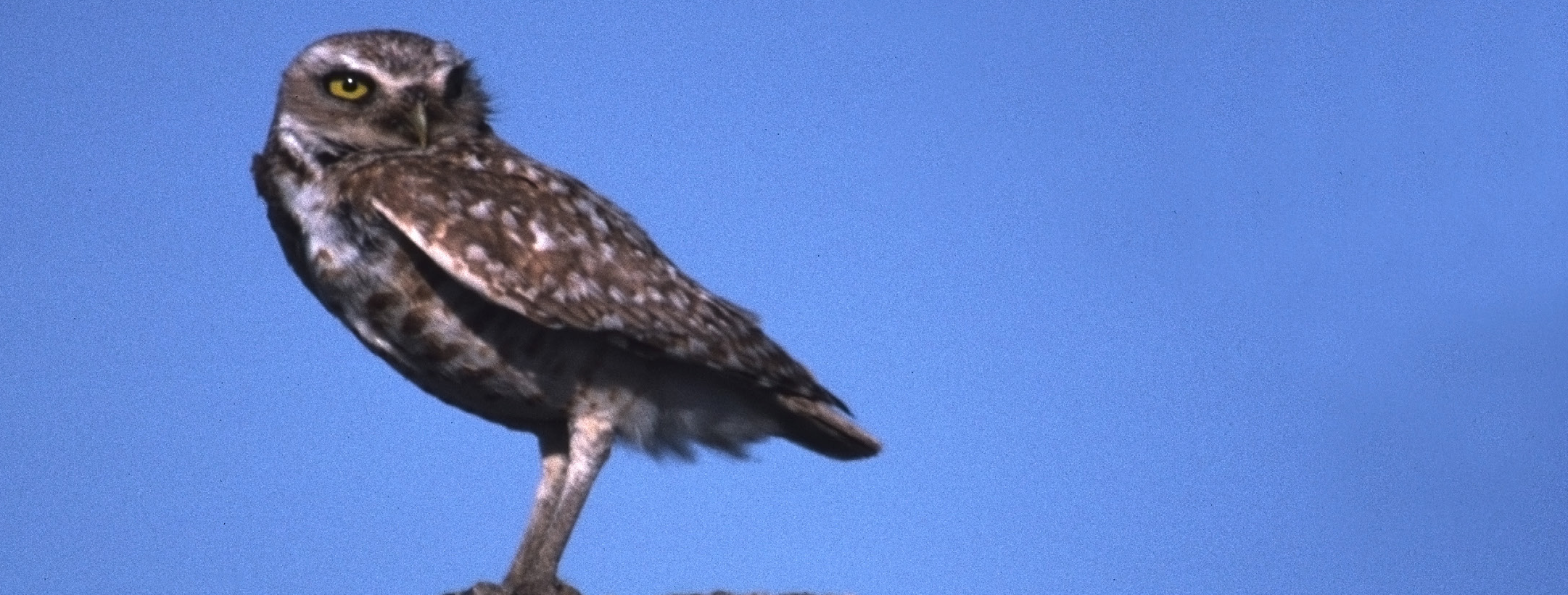Birds of the Prairie: Bobolink
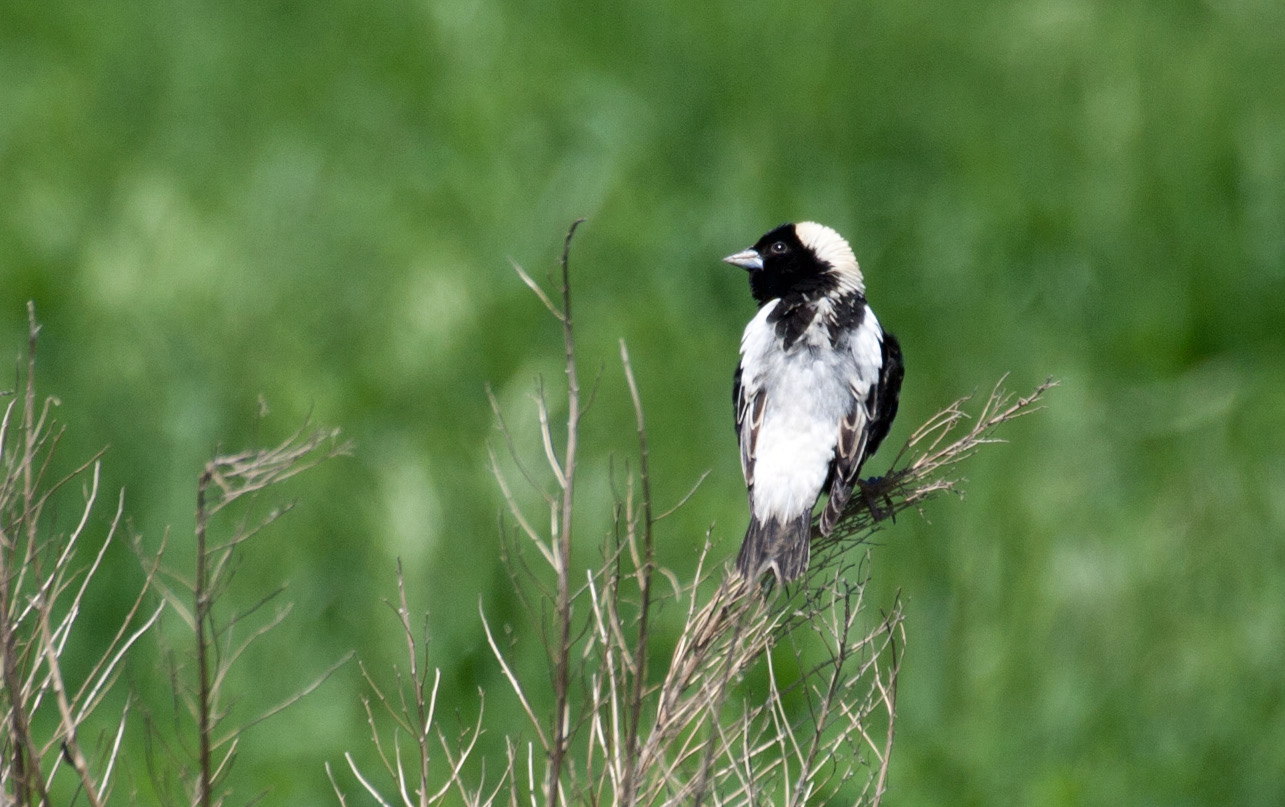
Photo courtesy of Reid Allen, taken at Dunbar Slough in Greene County, IA
The Bobolink is often found in mowed, grazed, or recently burned grasslands as well as in marshes and agricultural fields during molting and on migration. Breeding males (pictured above) are mostly black, with a white rump and scapulars and a straw colored nape. Though still commonly found, the Bobolink’s numbers are decreasing due to loss of native prairie habitat and changing agricultural practices.
Description adapted from the Cornell Lab of Ornithology.
Song: a bubbling, metallic warble with varied pitches.
Recorded by Wilbur L. Hershberger, courtesy of The Macaulay Library at the Cornell Lab of Ornithology.
Birds of the Prairie: Henslow’s Sparrow
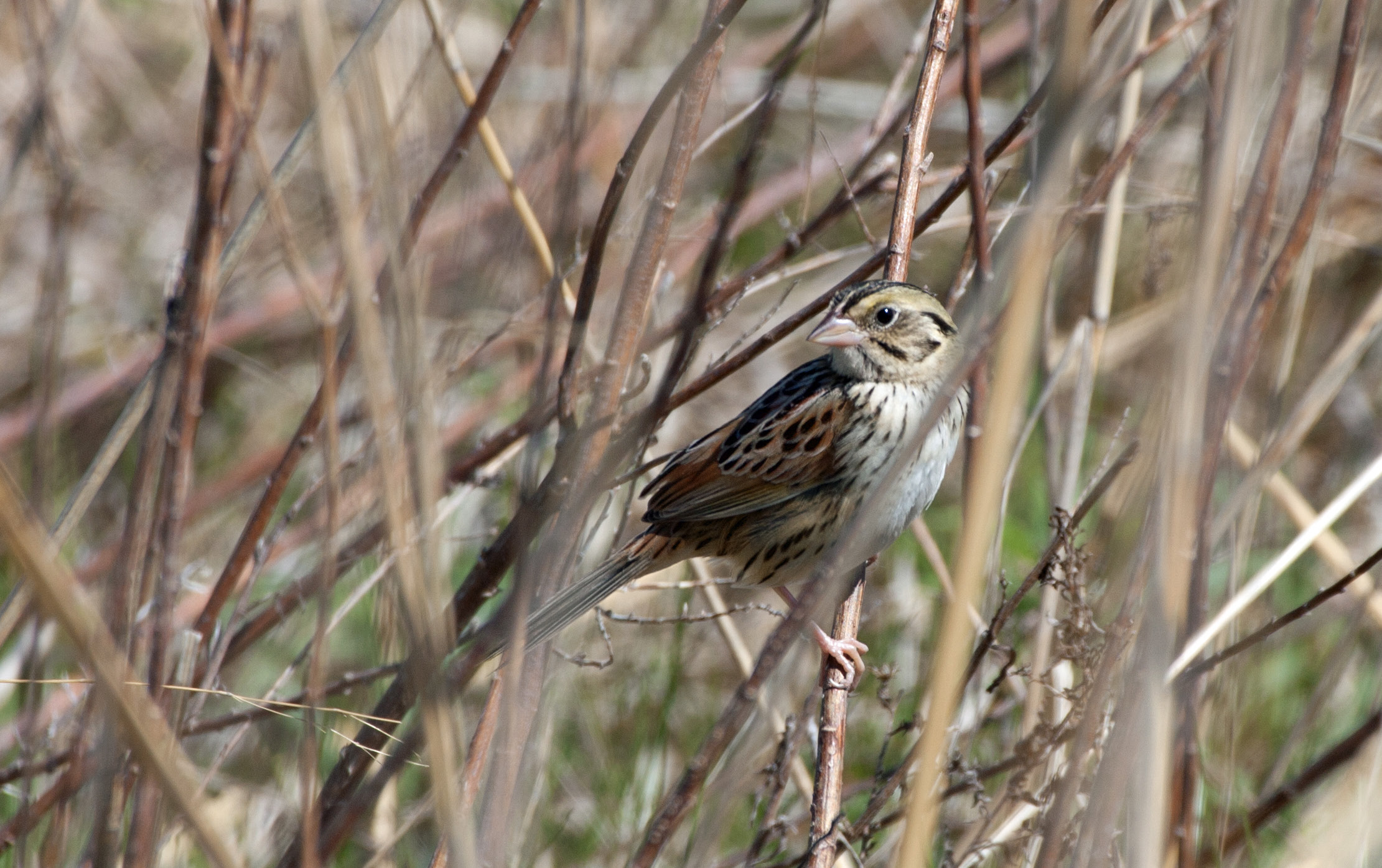
Photo courtesy of Reid Allen, taken at Kellerton Grassland in Ringgold County, IA
Henslow’s Sparrow is famously secretive. Reluctant to take flight, the bird runs through the grass to flee. Found in undisturbed grasslands, this sparrow’s population has dropped, largely due to prairie habitat loss, and it is now considered a near-threatened species.
Description adapted from the Cornell Lab of Ornithology.
Song: insect-like two-syllable tsi-lick.
Recorded by Julia Ferguson, courtesy of The Macaulay Library at the Cornell Lab of Ornithology.
Birds of the Prairie: Dickcissel
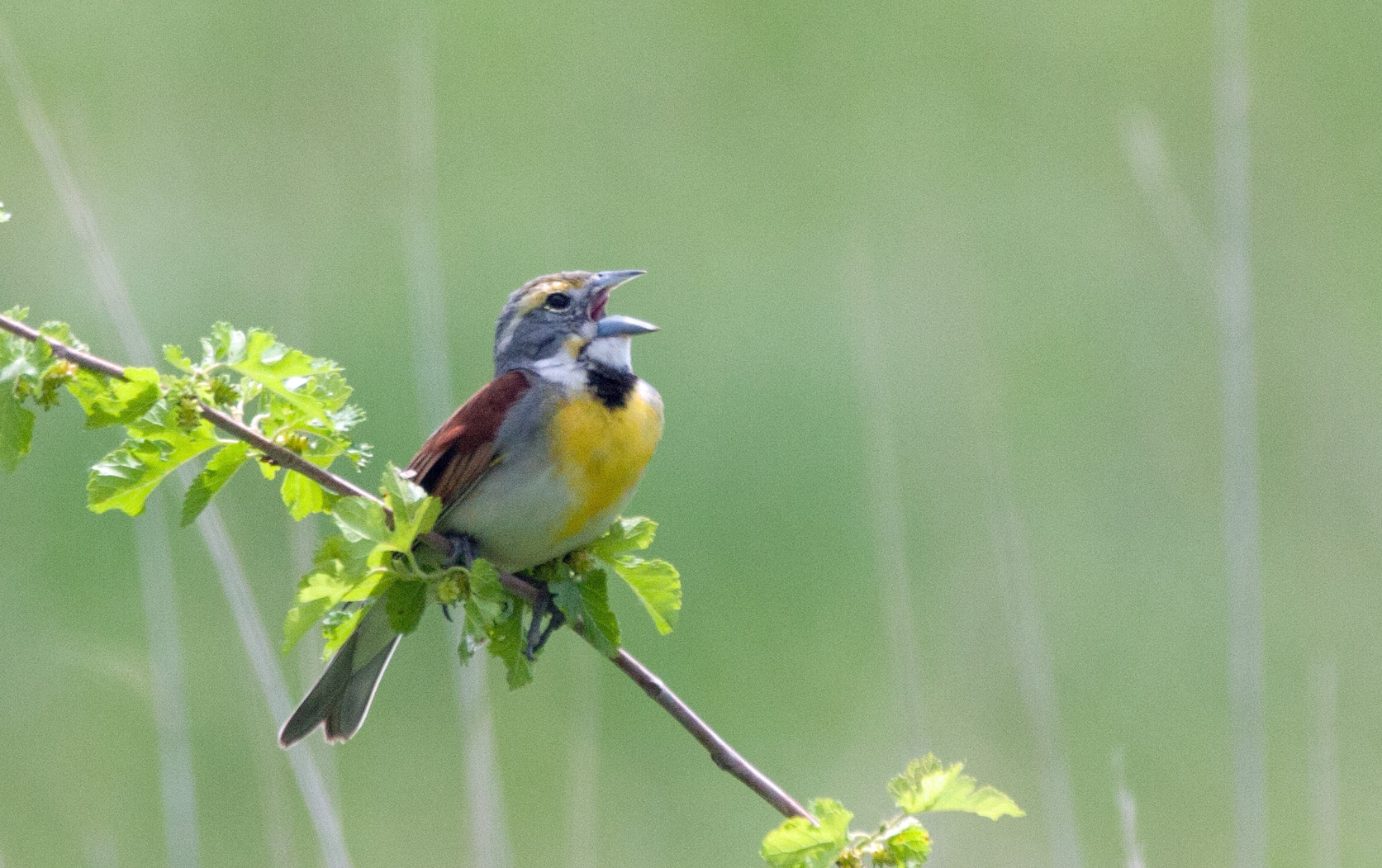
Photo courtesy of Reid Allen, taken in Neal Smith National Wildlife Area in Jasper County, IA
Stocky and short-tailed , the Dickcissel is found in grassy or weedy fields and brush. Looking like a miniature meadowlark the breeding males, as pictured, have a large black “V” on their yellow breast. In the fall Dickcissels will assemble into flocks of thousands, preparing for migration south. As prairie habitats are replaced with cropping, breeding grassland birds like the Dickcissel are decreasing in population.
Description adapted from the Cornell Lab of Ornithology
Song: skee-dlees chis chis chis (“dick dick ciss ciss ciss”).
Recorded by Theodore A. Parker III, courtesy of The Macaulay Library at the Cornell Lab of Ornithology.
Birds of the Prairie: Burrowing Owl
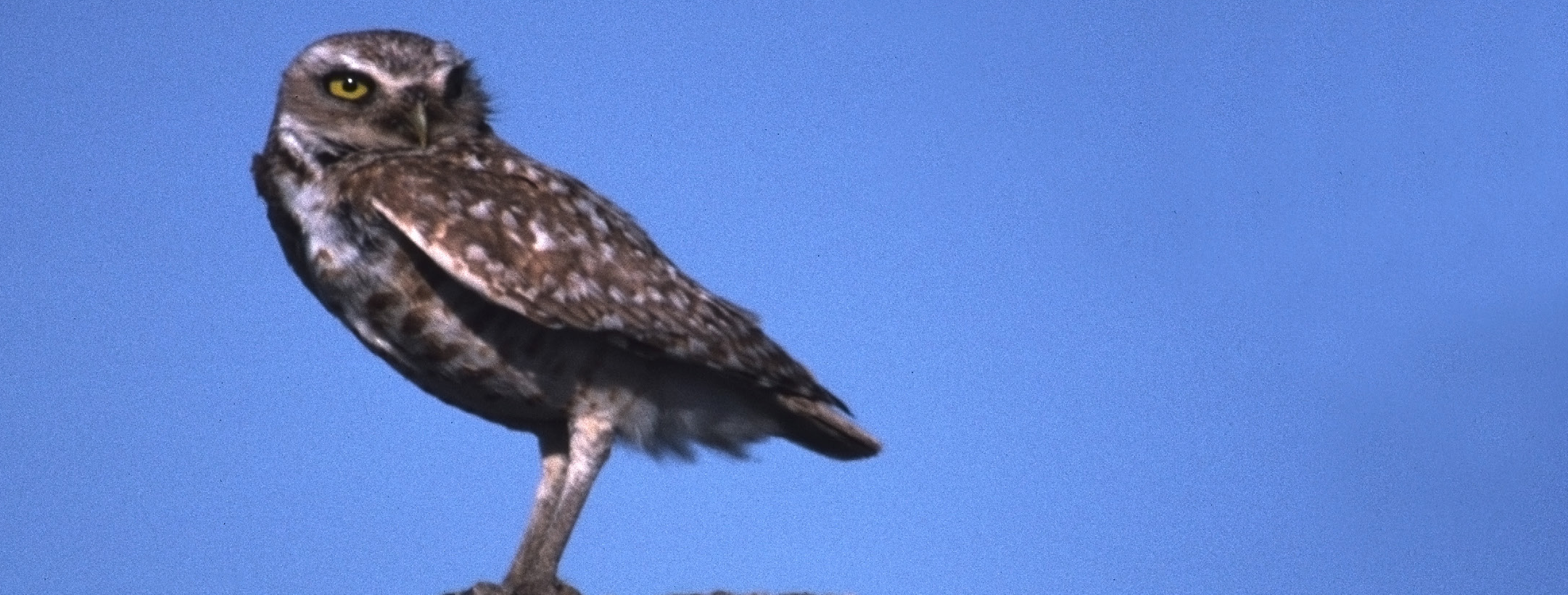
Photo courtesy of Reid Allen, taken at Valentine National Wildlife Area in north-central Nebraska
The long-legged Burrowing Owl has bright-yellow eyes. These owls live in underground burrows that can be several yards long, which they dig on their own or take over from prairie dogs, ground squirrels, or badgers. The greatest threat to the Burrowing Owl is the destruction of habitat through agricultural development or through efforts to eradicate prairie dogs.
Description adapted from the Cornell Lab of Ornithology.
Song: Though capable of producing a variety of calls, the Burrowing Owl is not especially vocal. Mimicking a rattlesnake’s warning, young owls call out an intense eep to scare predators
Recorded by Gerrit Vyn, courtesy of The Macaulay Library at the Cornell Lab of Ornithology.
